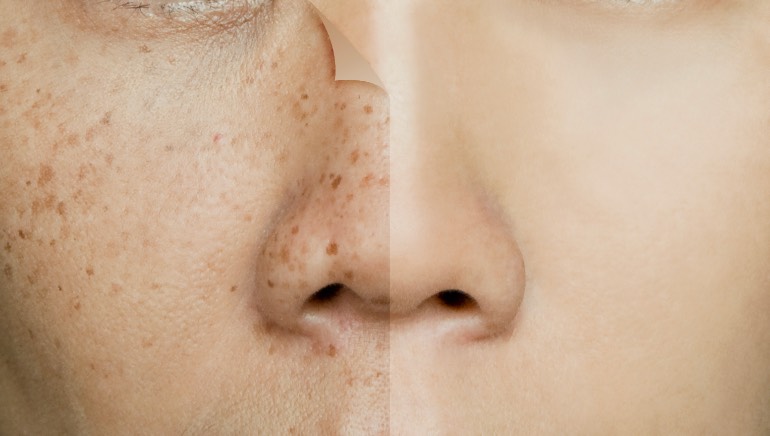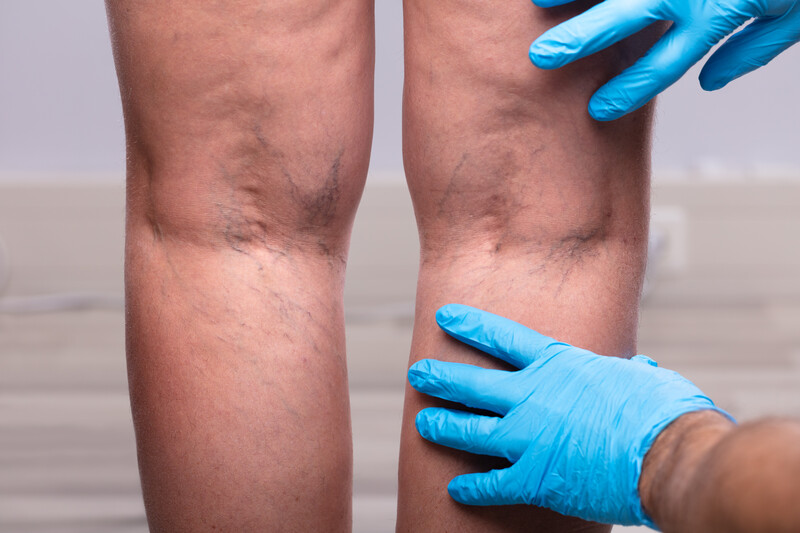Dealing with Facial Pigmentation Causes and Effective Treatments
Facial pigmentation is a common skin concern that affects individuals of all ages and skin types. Often referred to as “hyperpigmentation,” it can be caused by various factors and may appear in different forms on the face. In this article, we’ll delve into the causes of pigmentation on the face, explore the various types of facial pigmentation, and discuss effective non-surgical treatments to help you achieve a clearer and more radiant complexion.
Understanding the Causes of Facial Pigmentation
Pigmentation on the face can occur due to several reasons, and understanding the underlying causes is crucial for effective treatment. Here are some of the common factors that contribute to facial pigmentation
Sun Exposure
Excessive sun exposure is a primary cause of facial pigmentation. UV rays trigger the production of melanin in the skin, leading to the formation of dark spots, freckles, and sunspots on the face.
Hormonal Changes
Hormonal fluctuations during pregnancy, menopause, or as a result of birth control pills can lead to a condition known as melasma. Melasma causes dark patches, often on the forehead, cheeks, and upper lip.
Post-Inflammatory Hyperpigmentation (PIH)
PIH occurs after an injury, inflammation, or acne breakout. It leaves behind discolored areas on the skin, which can persist for several months.
Age
As we age, the natural aging process can result in the development of age spots or liver spots. These small, flat, and darkened areas commonly appear on the face and hands.
Genetics
Some individuals are genetically predisposed to facial pigmentation. If your parents or grandparents had issues with pigmentation, you may be more likely to experience it as well.
Types of Facial Pigmentation
Facial pigmentation can manifest in various forms, each with its distinct characteristics. Here are the most common types of facial pigmentation
Melasma
Melasma appears as brown or grayish patches on the face, often affecting the cheeks, forehead, and upper lip.
It is usually associated with hormonal changes, such as pregnancy or birth control use.
Sunspots (Solar Lentigines)
Sunspots are flat, brown spots that develop as a result of sun exposure.
They are most commonly found on areas of the face that are frequently exposed to the sun, such as the nose and cheeks.
Freckles
Freckles are small, light to dark brown spots that are genetically determined.
They tend to become more prominent with sun exposure.
Post-Inflammatory Hyperpigmentation (PIH)
PIH results from inflammation or injury to the skin, such as acne or insect bites.
It appears as darkened spots or patches in the affected areas.
Non-Surgical Treatments for Facial Pigmentation
Effective treatment options are available to address facial pigmentation, and they can significantly improve the appearance of your skin without the need for surgery. Here are some non-surgical treatments for pigmentation on the face
Topical Skin Lightening Agents
Topical treatments containing ingredients like hydroquinone, kojic acid, alpha hydroxy acids (AHAs), and vitamin C can help lighten dark spots and even out skin tone.
These products work by inhibiting melanin production and promoting the shedding of pigmented skin cells.
Chemical Peels
Chemical peels involve the application of a chemical solution to the skin, which exfoliates the top layers and stimulates collagen production.
They can effectively reduce pigmentation, especially when used in a series of treatments.
Microdermabrasion
Microdermabrasion is a non-invasive exfoliation technique that uses a machine to remove the outer layer of skin.
It can improve the appearance of pigmentation and leave the skin smoother and more radiant.
Laser Therapy
Laser treatments, such as intense pulsed light (IPL) and fractional laser, target pigmented areas and break down the excess melanin.
Multiple sessions may be required for optimal results.
Microneedling
Microneedling involves the use of tiny needles to create micro-injuries in the skin, stimulating collagen production and helping to fade pigmentation.
Combining microneedling with topical lightening agents can enhance results.
Sun Protection
Preventing further pigmentation is essential. Regular use of broad-spectrum sunscreen with a high SPF rating can help shield your skin from UV damage and reduce the risk of pigmentation worsening.
Conclusion
Facial pigmentation, or hyperpigmentation, can affect individuals for various reasons, including sun exposure, hormonal changes, and genetics. However, non-surgical treatments are available to help combat this common skin concern. From topical lightening agents to advanced laser therapy, there are options to suit different types of pigmentation on the face. To achieve the best results, it’s important to consult with a dermatologist or skincare professional who can tailor a treatment plan to your specific needs. Remember that patience and consistency are key when addressing facial pigmentation, and with the right approach, you can regain a more even and radiant complexion.
So, if you’ve been struggling with pigmentation on your face, don’t despair – there are effective treatments available to help you achieve the clear and beautiful skin you desire. Take the first step towards a brighter future for your skin by exploring these non-surgical options for treating pigmentation on the face.




